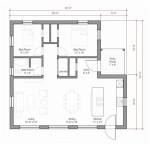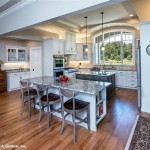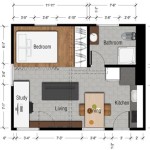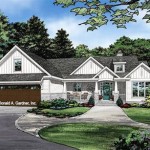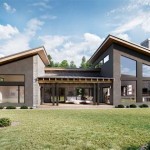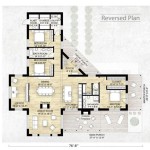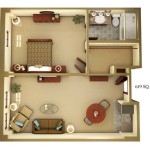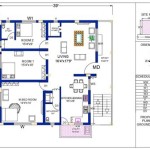Exploring 1-Bedroom ADU Floor Plans: Maximizing Space and Functionality
Accessory Dwelling Units (ADUs), also known as granny flats, in-law suites, or backyard cottages, are becoming increasingly popular as a solution for housing shortages, aging in place, and generating rental income. A 1-bedroom ADU offers a compact yet comfortable living space, suitable for single individuals, couples, or as a guest suite. The design and layout of a 1-bedroom ADU floor plan are crucial for optimizing space, functionality, and livability. This article delves into the key considerations and common layouts for 1-bedroom ADU floor plans, highlighting factors that contribute to a successful and efficient design.
The success of a 1-bedroom ADU hinges on a well-thought-out floor plan that balances aesthetic appeal with practical considerations. Square footage limitations necessitate creative design solutions to ensure the space feels open and inviting while effectively meeting the needs of its occupants. Several factors influence the design process, including local zoning regulations, budget constraints, intended use, and personal preferences. Before embarking on the design phase, it's essential to research local regulations regarding ADU size restrictions, setback requirements, and parking mandates. These regulations will significantly impact the possible footprint and configuration of the ADU.
Budgetary constraints are another critical factor in determining the scope and complexity of the floor plan. The choice of materials, finishes, and appliances will directly affect the overall cost of construction. It's crucial to establish a realistic budget early on and prioritize essential features that align with the intended use of the ADU. Determining the intended use of the ADU – whether it will be used for rental income, housing a family member, or providing a personal workspace – will also influence the design choices. For instance, a rental ADU may prioritize durability and low-maintenance materials, while an ADU designed for a family member might emphasize accessibility and personalized features.
Key Point 1: Common 1-Bedroom ADU Floor Plan Layouts
Several common 1-bedroom ADU floor plan layouts cater to different needs and spatial constraints. Here are some of the most prevalent configurations:
The Linear Layout: This layout is characterized by a long, narrow design with all rooms arranged along a single axis. The entrance typically leads into the living area, followed by the kitchen, bedroom, and bathroom at the end of the unit. This layout is well-suited for narrow lots or when attaching the ADU to an existing structure along a side. The linear layout can maximize natural light penetration by strategically placing windows along the long axis. However, it can also feel confined if not properly designed with adequate lighting and open sightlines.
The L-Shaped Layout: This layout features two wings intersecting at a right angle, creating a more distinct separation between living spaces. The living area and kitchen might occupy one wing, while the bedroom and bathroom are located in the other. This configuration offers more privacy for the bedroom and can be effective in creating a sense of spaciousness. The L-shaped layout is particularly suitable for corner lots or when the ADU needs to be integrated into an existing landscaping design.
The Open Concept Layout: The open concept layout eliminates walls between the living area, kitchen, and sometimes even the bedroom, creating a large, unified space. This layout is ideal for maximizing the feeling of openness and providing flexibility in furniture arrangement. The bedroom might be separated by a partial wall, a folding screen, or a strategically placed furniture piece to provide some visual privacy. Open concept layouts are especially effective in smaller ADUs where maximizing every square foot is paramount.
The Studio Apartment Layout: This layout is a variation of the open concept, where the living, sleeping, and kitchen areas are combined into a single room. The only separate space is typically the bathroom. Studio apartment layouts are the most space-efficient option but require careful planning to define distinct living zones within the open space. Smart storage solutions and multifunctional furniture are essential for maximizing functionality in a studio ADU.
The Detached Layout: This layout involves a standalone structure completely separate from the main house. It offers the most privacy and independence for both the homeowners and the ADU occupants. Detached ADUs allow for greater design flexibility and can incorporate features such as a private patio or garden. However, they also tend to be more expensive to build due to the need for independent utilities and foundation work.
Each of these layouts has its strengths and weaknesses, and the best option will depend on the specific site conditions, budget, and intended use of the ADU.
Key Point 2: Design Considerations for Maximizing Space and Functionality
Regardless of the chosen layout, several design considerations can significantly impact the overall functionality and livability of a 1-bedroom ADU:
Prioritizing Natural Light: Natural light can drastically improve the ambiance of a small space, making it feel brighter and more spacious. Incorporating large windows, skylights, and light wells can maximize natural light penetration. Strategically positioning windows to capture morning or afternoon sun can also enhance the living experience. Consider using light-colored paint and reflective surfaces to further amplify the effects of natural light.
Utilizing Vertical Space: In a small space, it's essential to utilize vertical space effectively. Installing tall shelves, cabinets, and wardrobes can provide ample storage without taking up valuable floor space. Consider using a loft bed or a raised platform to create additional storage underneath. Hanging artwork and mirrors vertically can also draw the eye upward, creating the illusion of height.
Employing Multifunctional Furniture: Multifunctional furniture is a game-changer in small spaces. Consider using a sofa bed, a folding dining table, or a coffee table with built-in storage. These versatile pieces can serve multiple purposes, reducing the need for separate furniture items and maximizing floor space. Opt for furniture with clean lines and a minimalist design to avoid overwhelming the space.
Creating a Sense of Flow: A well-designed floor plan should promote a natural flow between different areas of the ADU. Avoid creating bottlenecks or cramped passageways. Consider using visual cues, such as changes in flooring or the placement of furniture, to define distinct living zones without completely separating them. Maintaining consistent flooring throughout the ADU can also enhance the feeling of spaciousness.
Optimizing Storage Solutions: Storage is often a challenge in small spaces. Prioritize incorporating built-in storage solutions, such as drawers under the bed, shelves in the bathroom, and a pantry in the kitchen. Consider utilizing wall-mounted organizers and hanging storage systems to maximize vertical space. Declutter regularly to keep the space organized and free from unnecessary items.
Selecting the Right Appliances: Choosing appliances that are appropriately sized for the ADU is crucial. Opt for compact appliances, such as a 24-inch refrigerator, a combination washer-dryer, and a convection microwave oven. Consider using induction cooktops, which are energy-efficient and take up less space than traditional stovetops. Ensure that appliances are Energy Star certified to minimize energy consumption and reduce utility bills.
Considering Universal Design Principles: Even if the ADU is not intended for someone with mobility issues, incorporating universal design principles can enhance its usability and accessibility for people of all ages and abilities. This might include wider doorways, grab bars in the bathroom, and lever-style door handles. Universal design features can also increase the resale value of the ADU in the future.
Key Point 3: Specific Room Considerations
Each room in a 1-bedroom ADU requires careful planning to maximize its functionality and comfort:
Living Area: The living area should be a comfortable and inviting space for relaxation and entertainment. Choose a sofa or sectional that fits the scale of the room and provides ample seating. Incorporate a coffee table, a side table, and adequate lighting. Consider mounting a television on the wall to save floor space. Use rugs and throw pillows to add warmth and texture to the space.
Kitchen: The kitchen should be efficiently designed to facilitate cooking and meal preparation. A galley kitchen or a U-shaped kitchen are common configurations for small ADUs. Maximize countertop space by using a drop-leaf table or a butcher block island. Install plenty of cabinets and drawers to provide ample storage for cookware, utensils, and food items. Consider using a backsplash to protect the walls from spills and splatters.
Bedroom: The bedroom should be a tranquil and restful space. Choose a bed that fits the room comfortably and provides adequate sleeping space. Incorporate a nightstand, a dresser, and a closet for clothing storage. Use blackout curtains to block out light and ensure a good night's sleep. Consider adding a comfortable chair or a small desk to create a reading nook or a workspace.
Bathroom: The bathroom should be functional and well-ventilated. A walk-in shower is often preferred over a bathtub in small ADUs to save space. Install a vanity with storage underneath for toiletries. Consider using a wall-mounted toilet to free up floor space. Ensure adequate lighting and ventilation to prevent moisture buildup and mold growth.
Outdoor Space: Even a small outdoor space, such as a patio or a balcony, can significantly enhance the livability of the ADU. Incorporate outdoor furniture, such as a table and chairs, to create a relaxing seating area. Consider adding potted plants or a small garden to create a connection with nature. A well-designed outdoor space can extend the living area and provide a valuable escape from the confines of the ADU.
Careful consideration of these design principles and room-specific considerations will lead to a 1-bedroom ADU floor plan that is both functional and aesthetically pleasing, providing a comfortable and enjoyable living space for its occupants. The key is to prioritize efficient use of space, maximize natural light, and incorporate smart storage solutions to create a living environment that feels larger than its actual square footage.

Azalea 1 Bed Bath Adu 360 Sf Turnkey

Floor Plans Housing Forward Humboldt Building Our Community Together

One Bedroom Adu Or Guest Cabin 720002da Architectural Designs House Plans

Floor Plans Housing Forward Humboldt Building Our Community Together

1 Bedroom House Plan Examples

Floor Plan Options Dweller

One 1 Bedroom Adu Floor Plans Los Angeles Architect Drafter Apartment Granny Flat Plan

Professional Architectural Plans For Home Cabin Adu Ibra House

Home Visit Detached One Story Adu

1 Bed Casita Or Adu Under 800 Square Feet 623069dj Architectural Designs House Plans

